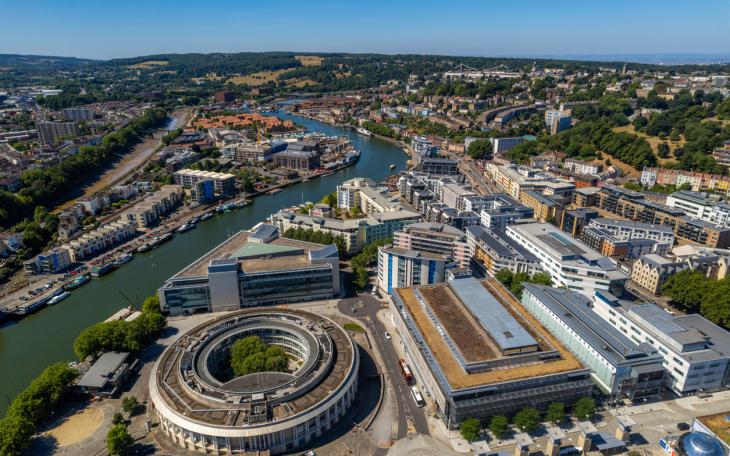Bristol Clean Air Zone: Breathe easier but not the ticket to tackle congestion...

Bristol introduced its long-awaited Clean Air Zone (CAZ) yesterday. The zone which covers a relatively small area of the city centre and some of the Portway is part of a bid to bring air pollution levels down.
The move was described by Marvin Rees, the Mayor of Bristol, as “an incredible milestone; to help create a city that is healthier for everyone to grow up, live and work in.” He also stressed that “no vehicles are banned from entering the central zone, and Bristol remains very much open to all residents, visitors and businesses.”
The move to reduce pollution and its damaging health effects is obviously very welcome; the scheme charges drivers of older vehicles £9 to drive in the central zone but it is not entirely clear if these funds are earmarked for further public transport improvements.
The CAZ is considered by many as a tax on those who are less able to afford a new vehicle or would prefer to drive their own vehicle until the end of its useful life; especially now that the government announced a ban on the sale of diesel and petrol cars from 2030 onwards, making that a more obvious date to switch vehicles.
There is financial support available to encourage people to ditch their older vehicles, but with a maximum of £2,000 for cars and up to £16,000 for a coaches or HGVs, I’m not convinced the sums add up.
Bristol is a difficult city to travel around whichever means you use; it is hilly, routes are severed by the city’s famous waterways and the travel modes don’t connect well. In addition, the cost of train travel into the city from neighbouring towns and cities is overall, expensive, infrequent and overcrowded. On more than one occasion I have abandoned a bus in Bristol mid-journey to walk as it was quicker.
There is, however, a masterplan of major transport changes being rolled out in the city, including a network of underground and overground lines and more segregated bus routes, which will certainly help getting around in the future.
As an advocate of the Portway Park and Ride, which benefits from dedicated bus lanes for much of its length, making it worth the effort to board the bus, I was encouraged to see recently that a new rail stop is also being created on the existing railway line, right next to the P&R as part of these improvements – a rare example of choice and joined up thinking.
Pardon the pun but I’m not holding my breath for the CAZ to reduce congestion at all, as over 71% percent of vehicles travelling into Bristol already meet the zone's emission standards anyway. It will be new public transport, its connectivity and affordability that will mark a shift in behaviour. I look forward to writing about these changes in the future as they come on-stream.
To view the extent of the CAZ, visit the link below...
https://www.cleanairforbristol.org/wp-content/uploads/2021/03/Small-CAZ-D-Final-2021.pdf









